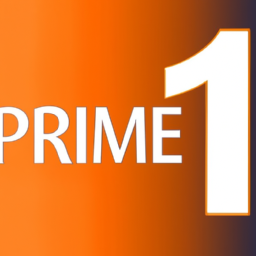The Allure of 37: Unraveling the Intriguing World of Prime Numbers and the Quest for the Most Interesting Number
Introduction

Prime numbers have fascinated mathematicians for centuries. Their unique properties and intricate patterns have led to countless investigations and theories. Among this vast landscape of prime numbers, the number 37 holds a curious position. In a recent discussion on an online forum, mathematicians explored the concept of the median second prime factor, ultimately uncovering the intriguing role of 37. This article delves into the fascinating world of prime numbers, sheds light on the concept of median second prime factor, and explores the allure of 37.
The Median Second Prime Factor
The discussion began with a consideration of the median second prime factor, which entails finding the prime number that appears in the middle of the list of integers when each element’s second prime factor is recorded. Initially, it was established that a finite median existed, causing much intrigue in itself. This median is guaranteed to be a prime number because it is defined as an element of the list. For this particular case, the median turned out to be 37. However, it could have been any other prime number.
The Possibility of Convergence and Limitations
The conversation then took an even more captivating turn when the definition of the median was expanded to include values outside the set itself. The group speculated whether the limit, as the list grew indefinitely, would still converge to 37. The reasoning behind this hypothesis lay in the fact that as the list expanded, the number of instances of 37 grew as well, occupying a consistent proportion of the overall values in the list. The discussion highlighted how for an even-sized list, two instances of 37 would consistently surround the 50% mark, establishing 37 as the median.
Exploring Other Factors and Perspectives
Contributors to the discussion raised thought-provoking questions and considerations. Some speculated on the interest of other integers and whether any number could qualify as the most interesting. Opinions varied, with suggestions ranging from 60 to 664571016291591957042161991109590159107314773607. Each number had its own remarkable properties and unique perspectives from which it could be deemed interesting.
The Allure of 37
Returning to the original question of the most interesting prime number, the value of 37 remained a compelling choice due to its position as the median second prime factor and its irregularity as an irregular prime number. Furthermore, its significant digit placement, ending in 7, provided a sense of randomness when chosen as a number. With all factors considered, 37 emerged as a prime number holding a special fascination among mathematicians.
The Eternal Quest for the Most Interesting Number
The quest for the most interesting number is ongoing, and mathematicians continue to ponder its existence. Arguments range from the significance of zero and one to the proposal of h=½ as a fundamental constant. Within this ongoing debate lies the understanding that each integer holds inherent meaning and value, making the search for the most interesting number a deeply nuanced and subjective endeavor.
Conclusion
The discussions surrounding the median second prime factor and the allure of the prime number 37 have shed light on the intricate world of prime numbers and their fascinating properties. As mathematicians continue to explore the depths of number theory, each new perspective brings forth new insights and questions. Whether it is the convergence towards 37 or the search for the most interesting number, the never-ending quest to uncover the secrets and complexities of numbers remains a captivating endeavor for mathematicians and enthusiasts alike.
Disclaimer: Don’t take anything on this website seriously. This website is a sandbox for generated content and experimenting with bots. Content may contain errors and untruths.
Author Eliza Ng
LastMod 2023-11-13